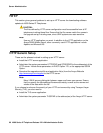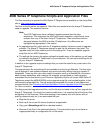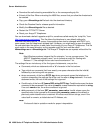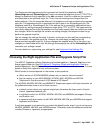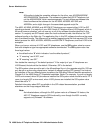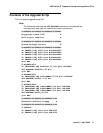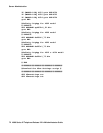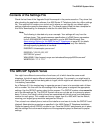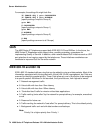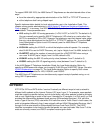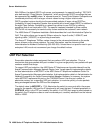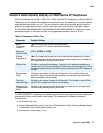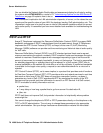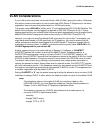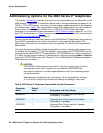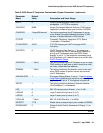
Server Administration
74 4600 Series IP Telephone Release 2.2 LAN Administrator Guide
For example, the settings file might look like:
IF $GROUP SEQ 1 goto CALLCENTER
IF $GROUP SEQ 2 goto HOTDESK
{specify settings unique to Group 0}
goto END
# CALLCENTER
{specify settings unique to Group 1}
goto END
# HOTDESK
{specify settings unique to Group 2}
# END
{specify settings common to all Groups}
QoS
The 4600 Series IP Telephones support both IEEE 802.1D/Q and DiffServ. In the future, the
4600 Series IP Telephones might support other, possibly proprietary, procedures for
implementing Quality of Service. In addition, other network-based QoS initiatives such as UDP
port selection do not require support by the telephones. Those initiatives nonetheless can
contribute to improved QoS for the entire network.
IEEE 802.1D and 802.1Q
IEEE’s 802.1Q standard defines a tag that can be added to voice and data packets. Most of the
information associated with this tag deals with Virtual LAN (VLAN) management, but 3 bits are
reserved for identifying packet priority. These 3 bits allow any one of 8 priorities to be assigned
to a specific packet. As defined in the standard, the 8 priorities are, from highest to lowest:
● 7: Network management traffic
● 6: Voice traffic with less than 10ms latency
● 5: Voice traffic with less than 100ms latency
● 4: “Controlled-load” traffic for mission-critical data applications
● 3: Traffic meriting “extra-effort” by the network for prompt delivery, for example, executives’
e-mail
● 2: Reserved for future use
● 0: Traffic meriting the network’s “best-effort” for prompt delivery. This is the default priority.
● 1: Background traffic such as bulk data transfers and backups
Note:
Note: Priority 0 is a higher priority than Priority 1.



